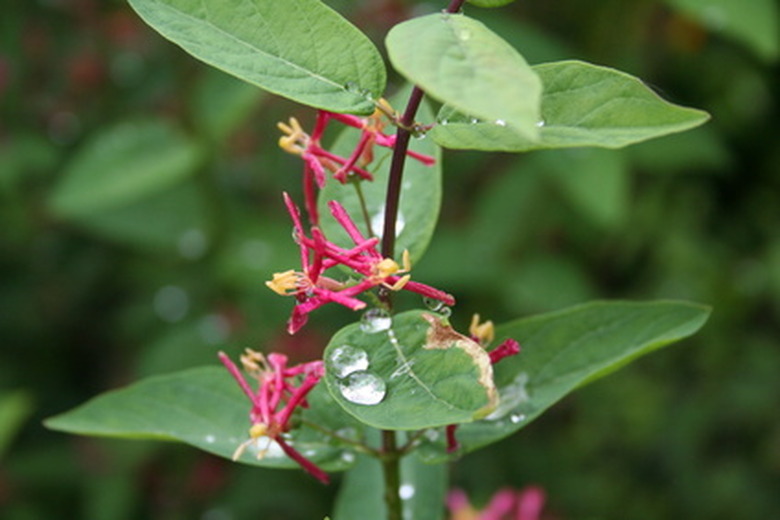How To Treat Mildew On Honeysuckle
Honeysuckle is an attractive and hardy shrub or climbing vine. It is so hardy, in fact, that it can quickly cover and kill neighboring plants. For that reason, it is considered an invasive weed in some states. Still, many home gardeners enjoy cultivating the plant for its beauty, pleasing scent and attraction to wildlife. Honeysuckle features bright green leaves and narrow, trumpet-shaped flowers that can be white, yellow or red. Mildew often affects these plants, dulling their bright colors with a thin layer of what looks like dust but is really a fungus.
Step 1
Spray the honeysuckle with preventive fungicide in early spring. Use a fungicide that is specifically approved for the treatment of mildew. If your plant is already showing signs of mildew, you can also spray it at this time. Although the fungicide will not remove the mildew that has already grown, it will stop more from developing.
- Honeysuckle is an attractive and hardy shrub or climbing vine.
- Mildew often affects these plants, dulling their bright colors with a thin layer of what looks like dust but is really a fungus.
Step 2
Prune away any parts of the plant that are heavily covered with the mildew. Honeysuckle can withstand rigorous pruning and, in fact, can benefit from it, so this will not harm the plant. It will also help prevent the fungus from spreading.
Step 3
Clear away anything that is crowding the honeysuckle. Expose the plant to as much sunlight as possible. Mildew develops in warm, wet conditions. Exposing your honeysuckle to sun and air will help prevent mildew from developing further or even at all, if you are lucky.
- Prune away any parts of the plant that are heavily covered with the mildew.
Step 4
Water your honeysuckle from the bottom, not the top. Water that sits on the leaves for hours will contribute to mildew development.
Step 5
Remove the debris of dead leaves or any infected plant material that you pruned away from the plant. Do not let it sit on the ground near the plant, as the fungus can overwinter in the soil. Throw the debris away or burn it. If you compost it, the fungus can live and infect other plants.
Things Needed
- Fungicide
- Garden shears
- Water
